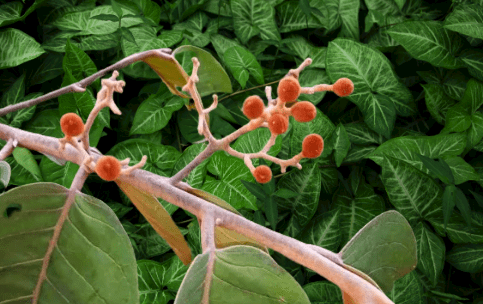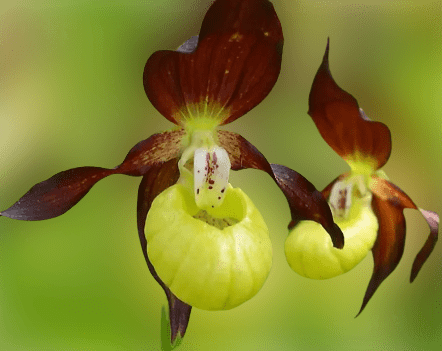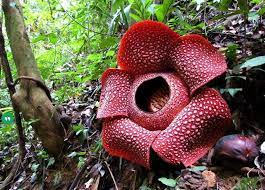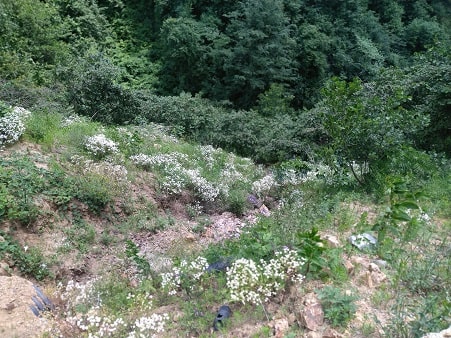What are 5 plants in South America? South America is a continent known for its rich and diverse plant life. Here are five fascinating plants native to South America:
- Brazilian Rainforest Nutmeg (Virola sebifera): Also known as Ucuuba or Virola, this evergreen tree is found in the Amazon Rainforest. Its seeds contain a butter-like substance called “Ucuuba butter,” which is used in skincare products and medicinal applications.
- Quinoa (Chenopodium quinoa): Native to the Andean region of South America, quinoa is a highly nutritious grain that has gained popularity worldwide due to its health benefits. It is rich in protein, fiber, and various essential nutrients.
- Coca Plant (Erythroxylum coca): The coca plant is native to the Andean regions of South America, and its leaves have been traditionally chewed or brewed into tea by indigenous cultures. However, it is also the source of cocaine when processed, and its cultivation is regulated due to drug-related concerns.
- Puya Raimondii: Known as “Queen of the Andes,” Puya Raimondii is an imposing and impressive flowering plant found in the high Andean regions of Peru and Bolivia. It can reach heights of up to 15 meters (50 feet) and produces a stunning inflorescence with numerous small flowers.
- Passion Fruit (Passiflora edulis): Also known as Maracuja, passion fruit is a tropical vine native to South America. It produces delicious and aromatic fruits with a sweet-tart flavor that are widely used in beverages, desserts, and sauces.

These are just a few examples of the incredible plant diversity found in South America. The continent is home to thousands of plant species, many of which have unique and valuable characteristics, both for human use and for maintaining the delicate balance of its ecosystems.
What plants can be found in South America?
South America is incredibly diverse and home to a wide range of plants, thanks to its varied climates and ecosystems. The continent boasts a vast array of plant species, including tropical rainforest plants, mountain flora, arid desert plants, and more. Here are some notable plant species found in various regions of South America:
- Amazon Rainforest Plants:
- Brazil Nut Tree (Bertholletia excelsa): Famous for its large nuts, which are edible and contain Brazil nuts.
- Rubber Tree (Hevea brasiliensis): Known for its latex, which is used in rubber production.
- Kapok Tree (Ceiba pentandra): Towering tree with fluffy fibers used as a filling for pillows and mattresses.
- Andean Mountain Plants:
- Quinoa (Chenopodium quinoa): Nutritious grain cultivated for its edible seeds.
- Coca Plant (Erythroxylum coca): Leaves traditionally chewed or brewed into tea by indigenous cultures.
- Puya Raimondii: “Queen of the Andes,” an impressive flowering plant found in the high Andean regions.
- Patagonian Steppe Plants:
- Calafate (Berberis microphylla): Shrub with dark purple berries, a symbol of Patagonia.
- Notro (Embothrium coccineum): Also known as Chilean Firebush, with bright red flowers.
- Atacama Desert Plants:
- Yareta (Azorella compacta): Slow-growing plant forming dense, spongy cushions.
- Candelabra Cactus (Browningia candelaris): Tall cactus species with branching arms.
- Pantanal Wetland Plants:
- Victoria Amazonica: Gigantic water lily with enormous floating leaves and large flowers.
- Yellow Water Lily (Nymphaea mexicana): Beautiful aquatic plant found in various wetland areas.
- Gran Chaco Plants:
- Quebracho (Schinopsis spp.): Trees with dense, hard wood, commonly used for tanning.
- Savanna and Grassland Plants:
- Pampas Grass (Cortaderia selloana): Tall, feathery grass species found in the Pampas region.
- Tropical Coastline Plants:
- Coconut Palm (Cocos nucifera): Iconic palm tree with versatile uses and widespread distribution.
These are just a few examples of the diverse plant life found in South America. The continent’s ecosystems are home to countless other fascinating and valuable plant species that contribute to the region’s ecological and cultural richness.
Endemic flowers and plants growing in South America
South America is home to numerous endemic flowers and plants, meaning they are native to and found exclusively in specific regions of the continent. These endemic species often have unique adaptations and play essential roles in their respective ecosystems. Here are some examples of endemic flowers and plants growing in South America:
- Rafflesia arnoldii (Rafflesia): Found in Southeast Asia and parts of Indonesia, Rafflesia arnoldii is a parasitic plant that produces the world’s largest flower. However, it is worth mentioning this plant as it is one of the unique and fascinating species found in the region.
Now, let’s focus on some endemic flowers and plants found in different regions of South America:
- Chilean Bellflower (Lapageria rosea): Endemic to Chile, this stunning flowering plant is also the national flower of the country. It produces large, beautiful bell-shaped flowers in shades of pink and red.
- Darwin’s Slipper Orchid (Cypripedium calceolus): Found in the southern regions of South America, including Argentina and Chile, this rare and exquisite slipper orchid is named after Charles Darwin.
- Easter Lily Cactus (Echinopsis oxygona): Endemic to the Andean regions of Argentina and Bolivia, this cactus species produces large, white flowers with a sweet fragrance.
- Bartlettina sordida: Also known as Senecio sordidus, this plant is endemic to the Juan Fernández Islands of Chile. It is a small shrub with daisy-like yellow flowers.
- Pinkertonia: This endemic plant genus belongs to the Gesneriaceae family and is found primarily in the Atlantic Forest of Brazil. It includes various species with vibrant flowers.
- Alstroemeria magnifica: Endemic to Chile, this beautiful perennial plant is a member of the Alstroemeriaceae family and features large, showy flowers in various colors.
- Solandra maxima (Cup of Gold): This striking flowering vine is native to Ecuador and produces large, golden-yellow trumpet-shaped flowers.
- Rauhia: A genus of bromeliads, many of which are endemic to the Andean regions of South America. These plants have unique rosettes of spiky leaves and often grow in high-altitude environments.

These are just a few examples of the many endemic flowers and plants found throughout the diverse landscapes of South America. Many of these species are rare and threatened, making their conservation and protection essential to preserve the continent’s unique botanical heritage.
How many plants are in South America?
It is challenging to determine the exact number of plant species in South America due to the vast and diverse nature of the continent. South America is known for its high biodiversity, hosting a wide range of ecosystems, from the Amazon Rainforest to the Andes Mountains, deserts, grasslands, and more. These varied habitats support a rich array of plant life.

Estimates suggest that South America is home to tens of thousands of plant species. However, the actual number could be much higher, and new species are still being discovered and described by scientists.
The Amazon Rainforest, in particular, is recognized as one of the most biodiverse regions on the planet, with a staggering number of plant species, including numerous yet-to-be-identified plants.
Conservation efforts and ongoing scientific research are crucial for understanding and preserving the unique plant diversity in South America. As new discoveries are made and our understanding of the region’s ecosystems deepens, the number of known plant species on the continent may continue to increase.
What are the plants like in South America?
Plants in South America are incredibly diverse and varied, thanks to the continent’s vast and unique range of ecosystems. From the lush Amazon Rainforest to the high Andean peaks, arid deserts, and coastal regions, South America offers a wide array of plant life. Here are some key characteristics of the plants found in different regions of South America:
- Amazon Rainforest Plants:
- Rich Biodiversity: The Amazon Rainforest is one of the most biodiverse regions globally, with an incredible variety of plant species, including trees, shrubs, vines, and epiphytes.
- Canopy Trees: Towering canopy trees form the upper layer of the rainforest, creating a dense and shaded environment beneath.
- Epiphytes: Many plants, such as bromeliads and orchids, grow as epiphytes, meaning they attach themselves to other plants and trees for support, without taking nutrients from them.
- Andean Mountain Plants:
- Unique Adaptations: Plants in the Andean region have adapted to extreme altitudes and varying temperatures. Some can survive in high elevations where oxygen levels are lower.
- Medicinal Plants: Many Andean plants have traditional medicinal uses by indigenous cultures for various ailments.
- Atacama Desert Plants:
- Extreme Adaptations: Plants in the Atacama Desert, one of the world’s driest deserts, have remarkable adaptations to withstand arid conditions.
- Succulents: Many desert plants are succulents, with thick, fleshy leaves that store water.
- Pampas and Grasslands:
- Grasses: The Pampas and other grasslands in South America are dominated by vast stretches of grasses, including Pampas grass and various native species.
- Grazing Animals: These regions support a variety of grazing animals, such as guanacos and rheas.
- Tropical Coastline Plants:
- Coastal Adaptations: Plants along South America’s coastlines have adaptations to tolerate saline conditions and shifting sand dunes.
- Mangroves: Coastal areas include mangrove forests, vital ecosystems that provide habitat for various marine species.
- Wetlands:
- Floating Plants: South America’s wetlands, such as the Pantanal and Orinoco Delta, are home to floating aquatic plants like water lilies and giant water hyacinths.
- Savannas:
- Open Grasslands: Savannas are characterized by large expanses of open grasslands, scattered trees, and shrubs.

The plant life in South America plays a crucial role in maintaining the continent’s diverse ecosystems and supporting a wide variety of animal species. Additionally, many of these plants have cultural, medicinal, and economic significance for the local populations. Preserving this rich botanical diversity is essential for the overall health and balance of South America’s natural environment. South American plants >>
What are some plants and trees in South America?
South America is home to a wide variety of fascinating plants and trees, thanks to its diverse range of ecosystems. Here are some notable examples found in different regions of South America:
- Amazon Rainforest Plants:
- Brazil Nut Tree (Bertholletia excelsa): Known for its large edible nuts and valuable timber.
- Rubber Tree (Hevea brasiliensis): Source of natural rubber, an essential commodity.
- Kapok Tree (Ceiba pentandra): A massive tree with fluffy fibers used in various applications.
- Rubber Fig (Ficus elastica): A type of fig tree with latex-producing properties.
- Andean Mountain Plants:
- Quinoa (Chenopodium quinoa): Highly nutritious grain cultivated for its edible seeds.
- Puya Raimondii: “Queen of the Andes,” an impressive flowering plant found at high elevations.
- Yareta (Azorella compacta): Slow-growing plant forming dense, spongy cushions in the high-altitude regions.
- Patagonian Steppe Plants:
- Calafate (Berberis microphylla): Shrub with dark purple berries, a symbol of Patagonia.
- Notro (Embothrium coccineum): Also known as Chilean Firebush, with bright red flowers.
- Atacama Desert Plants:
- Yareta (Azorella compacta): Found in the harsh conditions of the Atacama Desert.
- Candelabra Cactus (Browningia candelaris): A tall cactus species with branching arms.
- Pantanal Wetland Plants:
- Victoria Amazonica: Gigantic water lily with enormous floating leaves and large flowers.
- Yellow Water Lily (Nymphaea mexicana): Beautiful aquatic plant found in various wetland areas.
- Pampas and Grasslands:
- Pampas Grass (Cortaderia selloana): Tall, feathery grass species found in the Pampas region.
- Yerba Mate (Ilex paraguariensis): A popular beverage made from the leaves of this tree.
- Tropical Coastline Plants:
- Coconut Palm (Cocos nucifera): Iconic palm tree with versatile uses and widespread distribution.
- Guava (Psidium guajava): Tropical fruit tree commonly found along coastal areas.
- Savannas:
- Umbrella Thorn Acacia (Vachellia tortilis): A thorny tree typical of savannas in northern South America.
These are just a few examples of the many fascinating plants and trees found in South America. The continent’s rich biodiversity contributes to its unique ecosystems and plays a vital role in supporting various animal species and maintaining the overall ecological balance. What are the popular and endemic plants that grow in South America? >>
